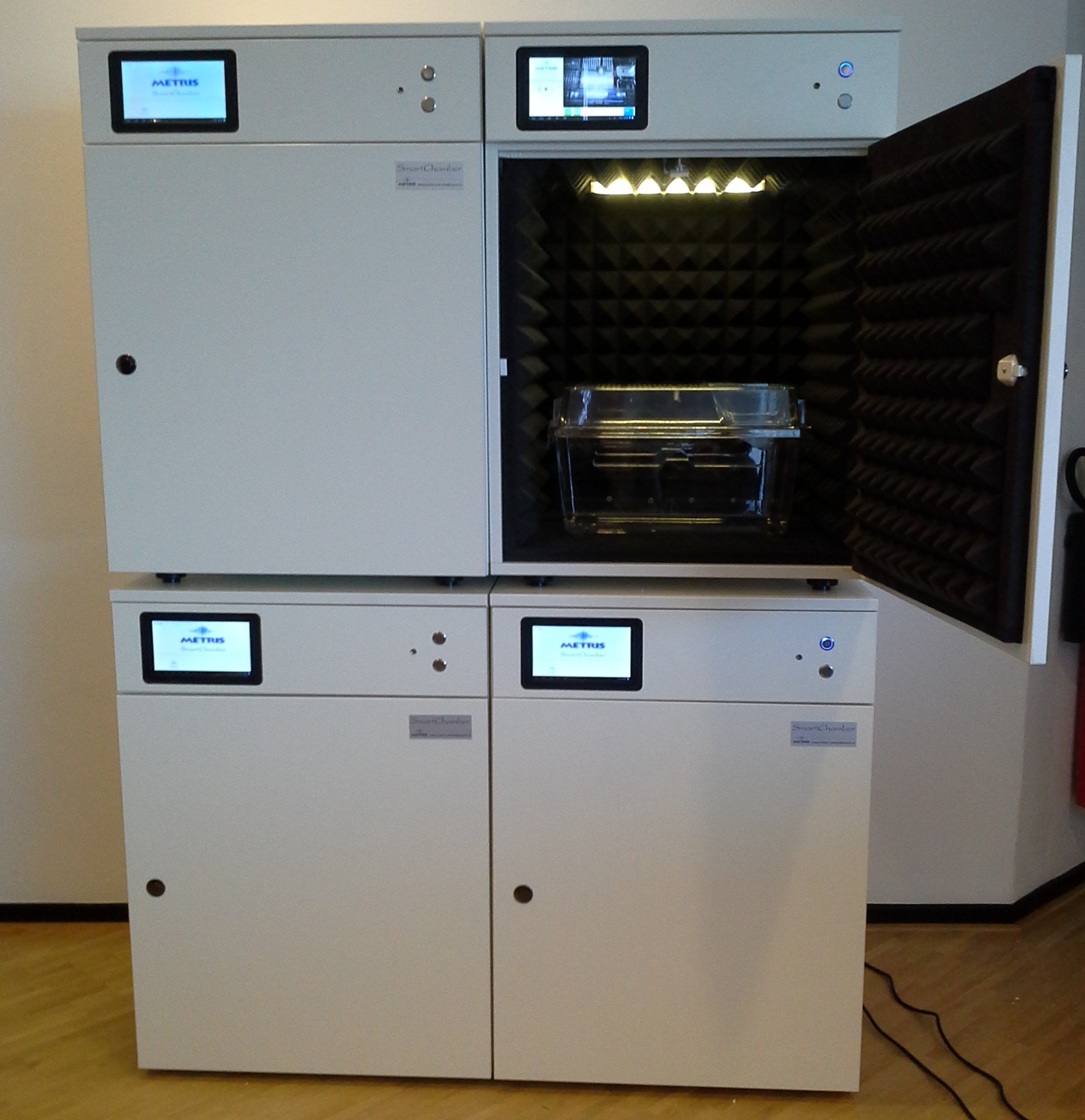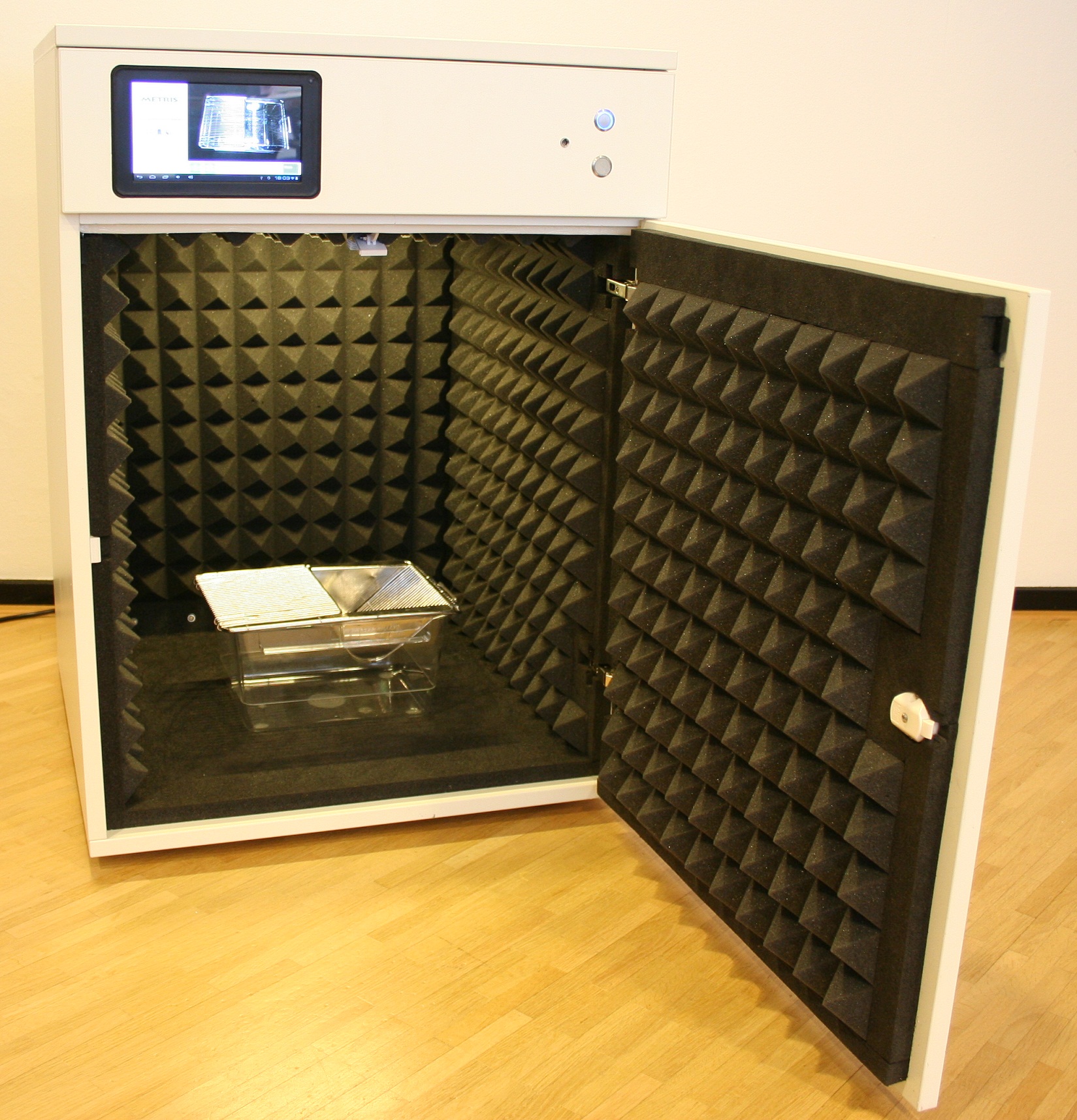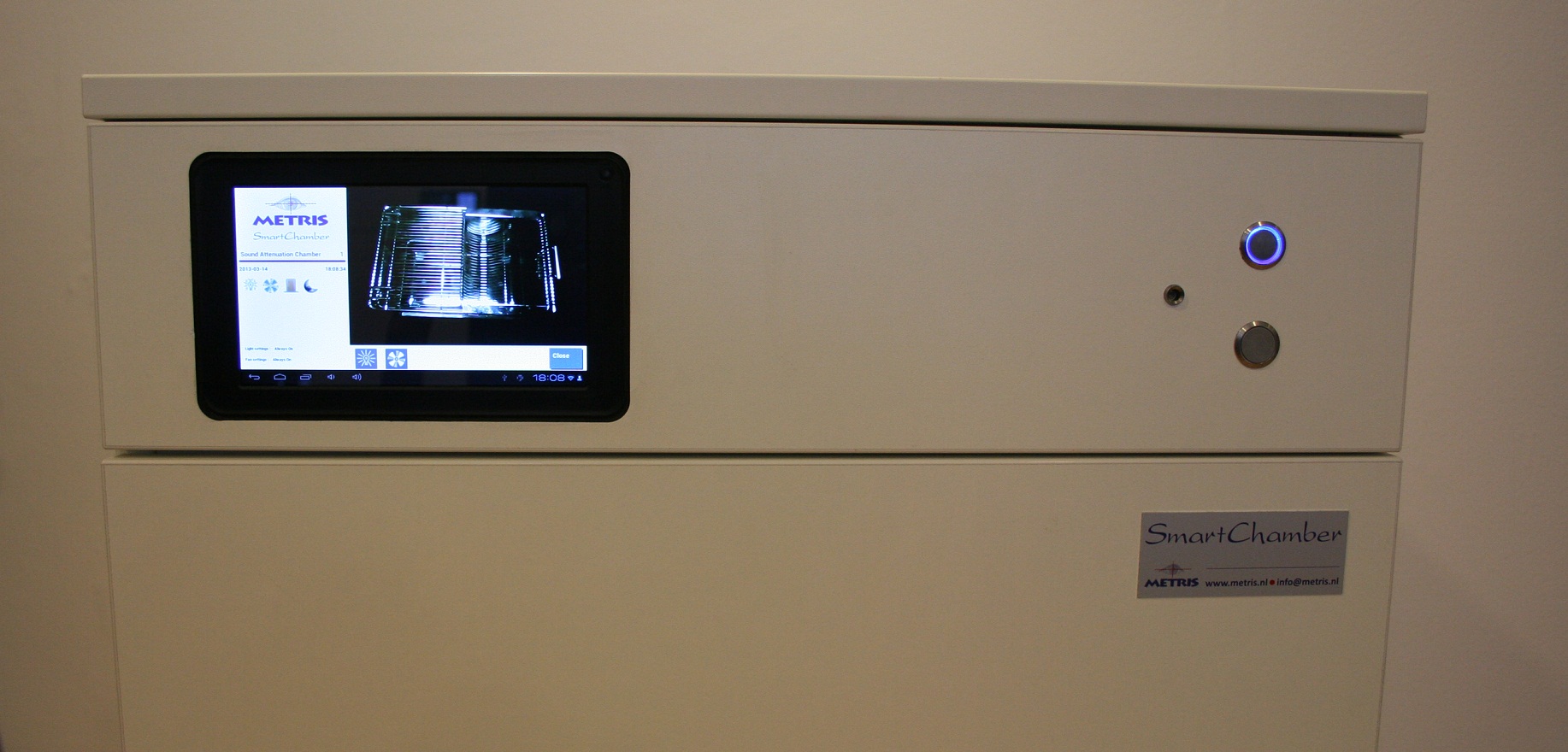Introduction
SmartChamber is the latest product in the Metris portfolio and provides the ideal environment for high quality Ultrasonic Vocalization measurements. In addition it is an answer to the growing requests for a measurement environment in which external stimuli and crosstalk between measurement cages is minimized.
Current Sound Attenuation Chambers or Cubicles are designed to provide some sound isolation against normal laboratory sounds. For several reasons these chambers are not very suited for ultrasound vocalization experiments:
- Ultrasound measurements require not only isolation from normal sounds, but more important from ultrasonic noise.
- Minimizing echo's during ultrasonic vocalization recording is important to enable proper call detection and call classification.
- Almost all ultrasonic microphones on the market have a rather small opening angle, especially at the higher frequencies, which means that the microphone should be placed high enough to cover the complete test arena.
- Most commercially available chambers use noisy ventilators that are mounted in the measurement cabin and create disturbances in the normal and ultrasound frequency range.
- Popular Sound Attenuation Chambers have a small window to see the animal. Often it can be mechanically opened creating further disturbances.
|

|
How does SmartChamber work?
 The SmartChamber consists of two parts, the measurement cabin and the control part:
The SmartChamber consists of two parts, the measurement cabin and the control part:
The measurement cabin is sound proof and minimizes echo's using an pyramid foam interior. The cabin offers space for standard European rodent cages (such as Type-1, Type-2, Type-2L, Type-3, Type-3h and standard USA cages for mice, rats, hamsters and guineapigs. The measurement cabin is equipped with:
- Ultrasound microphone
- LED light
- Camera
- Ventilation (ultralow noise fan is mounted outside measurement cabin)
The control part of the chamber is equipped with aTablet PC and electronics that control the LED-light, ventilator and camera. A door sensor and light sensor (LDR) measure if the door is open or closed and the light in the laboratorium room to enable synhronized control of light and automatic ventilation in the smart chamber.
Several settings can be choosen for example to couple the light in the SmartChamber automatically to the Day-Night cycle in the laboratorium room.
Advantages of the SmartChamber
 The SmartChamber provides the ideal environment for ultrasonic vocalization recordings and any other measurements in which in minimum influence from the laboratory environment is required. The SmartChamber has the following unique features:
The SmartChamber provides the ideal environment for ultrasonic vocalization recordings and any other measurements in which in minimum influence from the laboratory environment is required. The SmartChamber has the following unique features:
- Designed to block both normal sounds as well as ultrasonic sounds and noise
- Effectively elimiates echos using pyramid foam
- Reduction of magnetic fields to reduce noise in the ultrasound recordings
- Provides an integrated and well positioned microphone
- Includes an integrated LED light and Ultralow noise ventilator (6 dB only)
- The fan is mounted in the control part of the chamber and not in the measurement cabin to further reduce sound of ventilation.
- An integrated camera provides the user with the possibility to observe the animal on the Tablet in the front, without having to creates sounds or the need of a window in the measurement cabin
- Various user adjustable light and fan settings to control the environment in the SmartChamber. A light sensor in the front measures the light in the laboratory room and enables synchronized light-dark conditions in the SmartChamber.
- Special feet on the top of the chamber enable the possibility for stable stacking of the SmartChambers and save space.
- A doorswitch checks if the door is closed or open.
- When the door knob is pushed in, a latch keeps the door securely closed. When the door knob is pushed in it disappears in the door such that no parts are sticking out of the SmartChamber.
Other functions
Several modules can be added to the SmartChamber to measure environmental variables such as temperature, humidity, air pressure and more. These options provide the user with a complete dataset of environmental conditions during their experiment that can be crossed referenced with other experimental variables.
For customers whom are interested in recording the video camera signal various options for recording equipment and sycnhronization with third party equipment are offered too.






 The SmartChamber consists of two parts, the measurement cabin and the control part:
The SmartChamber consists of two parts, the measurement cabin and the control part: The SmartChamber provides the ideal environment for ultrasonic vocalization recordings and any other measurements in which in minimum influence from the laboratory environment is required. The SmartChamber has the following unique features:
The SmartChamber provides the ideal environment for ultrasonic vocalization recordings and any other measurements in which in minimum influence from the laboratory environment is required. The SmartChamber has the following unique features:
